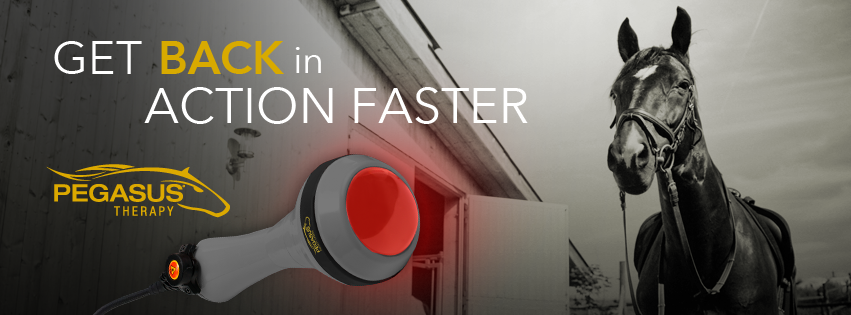Equine Therapy for Injury Recuperation: Exactly How Equines Assist Heal Emotional Wounds
Equine Therapy for Injury Recuperation: Exactly How Equines Assist Heal Emotional Wounds
Blog Article
Evaluating the Efficiency of Laser Therapy in Equine Treatment for Injury Recovery
The assessment of laser therapy's effectiveness in equine injury rehab pivots on numerous factors, including recuperation time, discomfort mitigation, and tissue regeneration. Scientific researches suggest significant improvements in problems like tendonitis and osteo arthritis, credited to improved cellular function and raised ATP manufacturing. Vets frequently observe exceptional end results with laser treatment contrasted to conventional techniques, placing it as an important component in equine treatment. Nonetheless, the necessity for continuous tracking and personalized therapy strategies can not be overemphasized. What details professional proof sustains these cases, and just how do vets implement these protocols in method?
Recognizing Laser Treatment
Laser therapy has become a pivotal device in vet medicine, particularly in the therapy of equine problems. Known for its non-invasive nature and efficacy, laser treatment includes the application of details wavelengths of light to promote cells repair service and minimize inflammation. This healing method is progressively favored for its capacity to speed up the recovery process in horses struggling with a range of musculoskeletal injuries and persistent conditions.
The primary device behind laser therapy is its capability to boost mobile functions. When laser light passes through the skin, it is absorbed by mitochondria, the powerhouse of cells, which brings about enhanced manufacturing of adenosine triphosphate (ATP) This biochemical energy boost promotes cellular repair service and regrowth. In addition, laser therapy advertises vasodilation, boosting blood flow and oxygen shipment to broken tissues, therefore quickening recovery.
In equine medicine, laser treatment is specifically advantageous for conditions such as tendonitis, osteo arthritis, and injury recovery. The strategy is admired for its pain-relieving buildings, permitting horses to restore wheelchair and feature extra quickly. Veterinarians additionally value its minimal negative effects compared to other treatment techniques, making it a reliable and safe option for equine care.

How Laser Therapy Works

Upon absorption, these photons trigger a series of biochemical adjustments, enhancing mitochondrial function and causing enhanced adenosine triphosphate (ATP) manufacturing. This rise in ATP speeds up mobile metabolism, promoting cells repair work and regrowth. In addition, laser treatment regulates inflammatory reactions by impacting cytokine degrees and minimizing oxidative stress and anxiety, thereby easing discomfort and swelling.
An additional substantial facet of laser therapy is its function in improving microcirculation. The therapy promotes vasodilation, improving blood circulation and oxygen distribution to damaged cells (Equine Therapy). This assists in the elimination of mobile debris and supports the spreading of fibroblasts and collagen synthesis, important for injury healing
Clinical Evidence
The efficiency check my reference of laser therapy in equine therapy has actually been corroborated via different professional studies, showcasing its restorative possible throughout a variety of problems. Several regulated tests and observational research studies have actually recorded significant enhancements in cells repair service, discomfort reduction, and total rehab timelines. For instance, a research study performed by Turner et al. (2012) demonstrated that equines treated with low-level laser weblink treatment (LLLT) for tendon injuries showed accelerated healing contrasted to those receiving standard treatments. The research highlighted a significant decrease in swelling and boosted collagen formation.
Likewise, research study by Johnson and associates (2015) concentrated on equine muscle injuries, revealing that laser treatment significantly expedited muscular tissue fiber regrowth and lowered muscular tissue tightness. These findings were supported by histological analyses showing better muscle mass tissue organization. Scientific assessments have actually revealed that laser therapy can alleviate persistent conditions such as osteo arthritis. A research by Smith et al. (2018) reported that equines with osteoarthritic joints experienced notable discomfort relief and raised variety of motion adhering to a program of laser treatment sessions.
Veterinarian Insights

Vets also appreciate the convenience of laser therapy. It can be employed for a large array of conditions, from shallow injuries to deeper bone and joint injuries. Dr. Emily Brown highlights its utility in dealing with problems like tendonitis and osteoarthritis, where traditional treatments typically fail. She mentions that laser therapy can be tailored to the particular requirements of each equine, making certain optimum end results.
In addition, vets value the capability to integrate laser treatment with other treatment methods. This multimodal technique can improve overall therapy effectiveness, providing a comprehensive remedy for equine rehab. Such endorsements from skilled specialists emphasize the expanding approval and application of laser treatment in equine medicine.
Practical Factors To Consider
A crucial aspect of implementing laser treatment in equine treatment entails understanding the useful considerations that ensure its efficiency and security. Most importantly, it is crucial to select the appropriate laser gadget, as various types vary in wavelength, power, and penetration depth. Equine Therapy. Veterinarians need to be fluent in these specifications to customize therapy methods effectively to every injury kind
In addition, the frequency and duration of laser therapy sessions need cautious planning to make the most of restorative benefits while look here lessening any kind of possible adverse effects. Consistent monitoring of the horse's response to treatment can assist required modifications in the treatment regimen. Establishing a risk-free and regulated setting throughout therapies is also important to stop accidental exposure to laser emissions, which could hurt both the equine and the trainer.
Educating and qualification of employees carrying out laser therapy are paramount to guarantee appropriate method and to support security requirements. Furthermore, preserving precise records of each session, including laser settings and observed results, is important for assessing the overall effectiveness of the treatment and for making data-driven decisions.
Conclusion
Laser treatment has arised as an efficient modality in equine injury recovery, providing significant advantages in recovery time, discomfort relief, and cells healing. For optimum results, continual tracking and customized treatment methods stay important in leveraging the complete potential of laser therapy in equine treatment.
Report this page